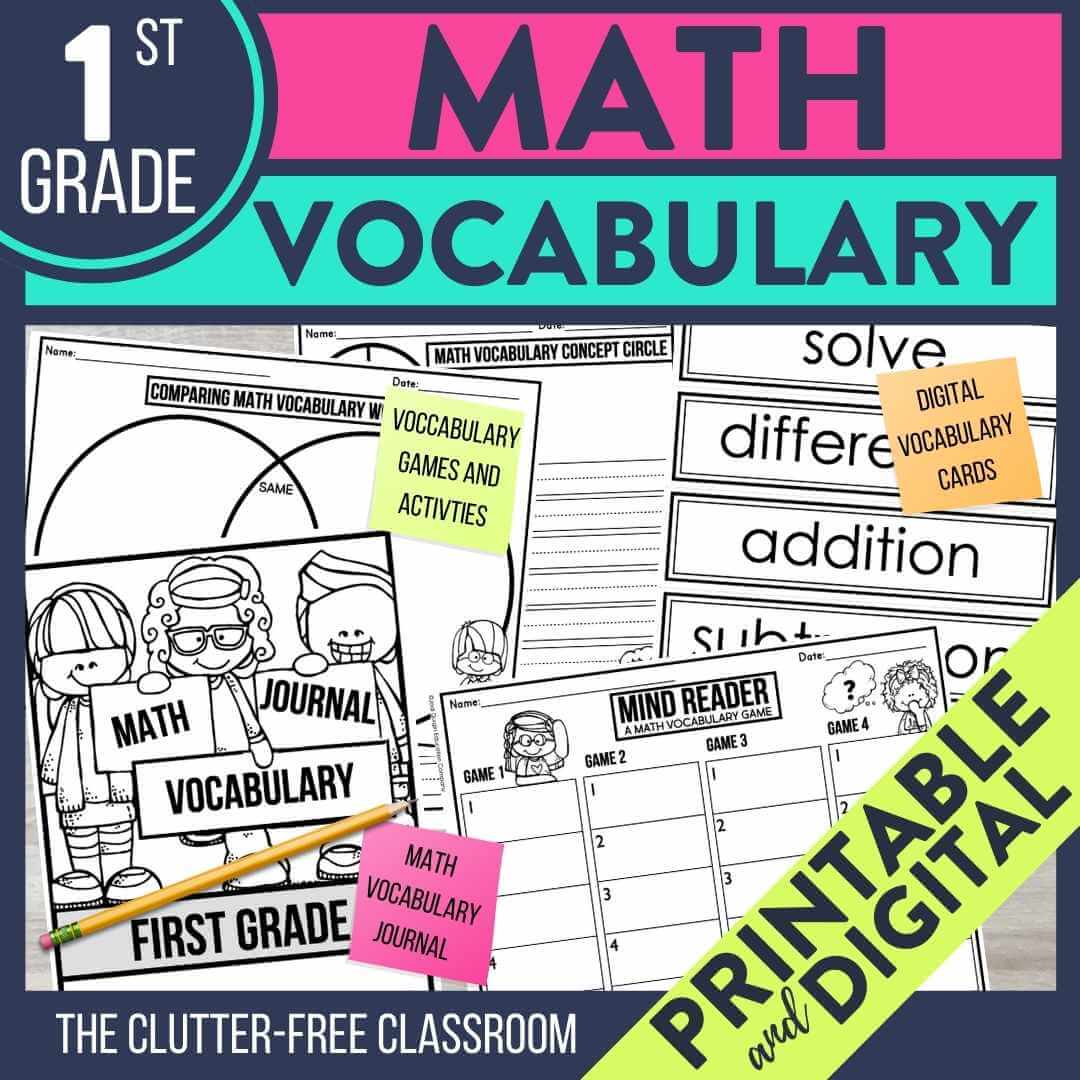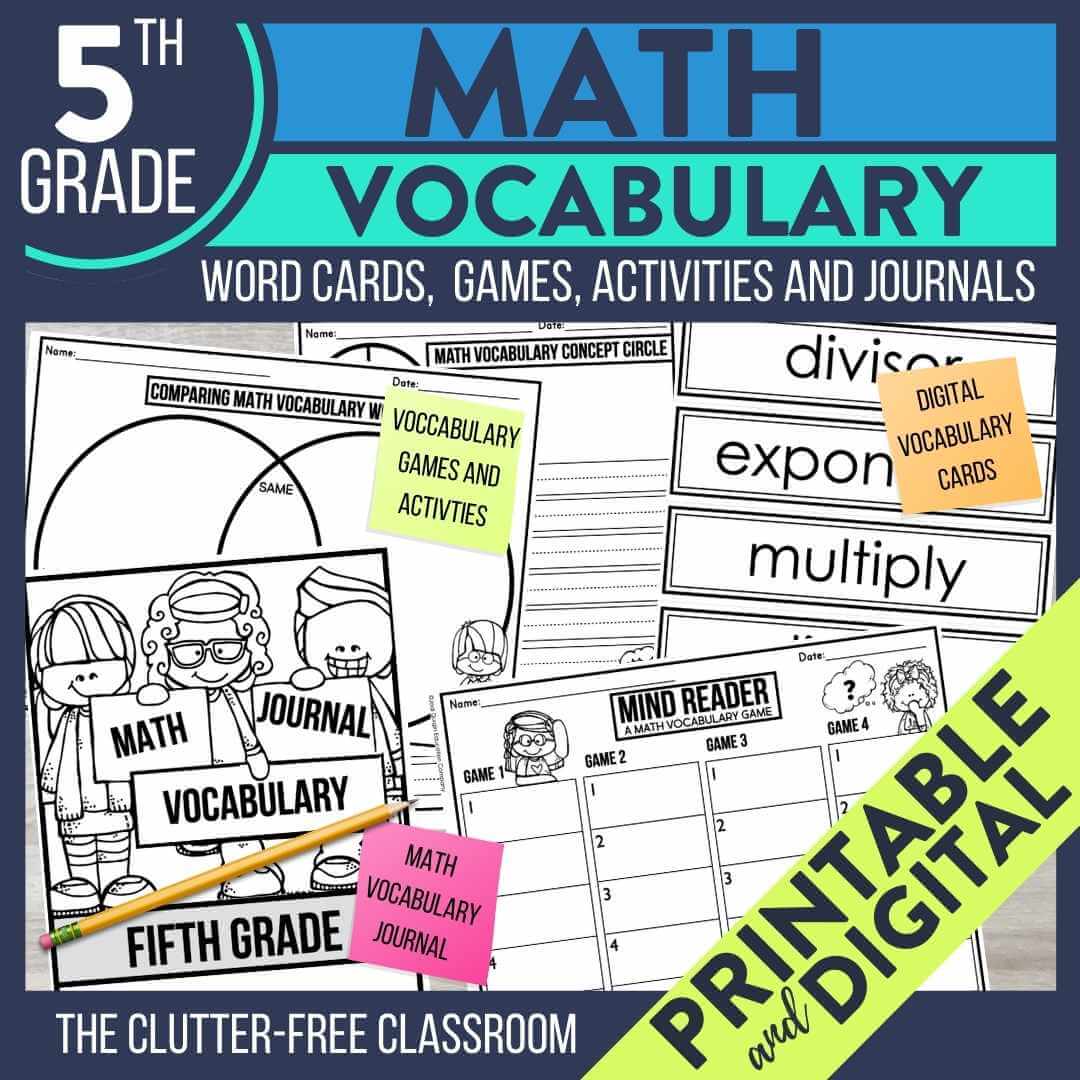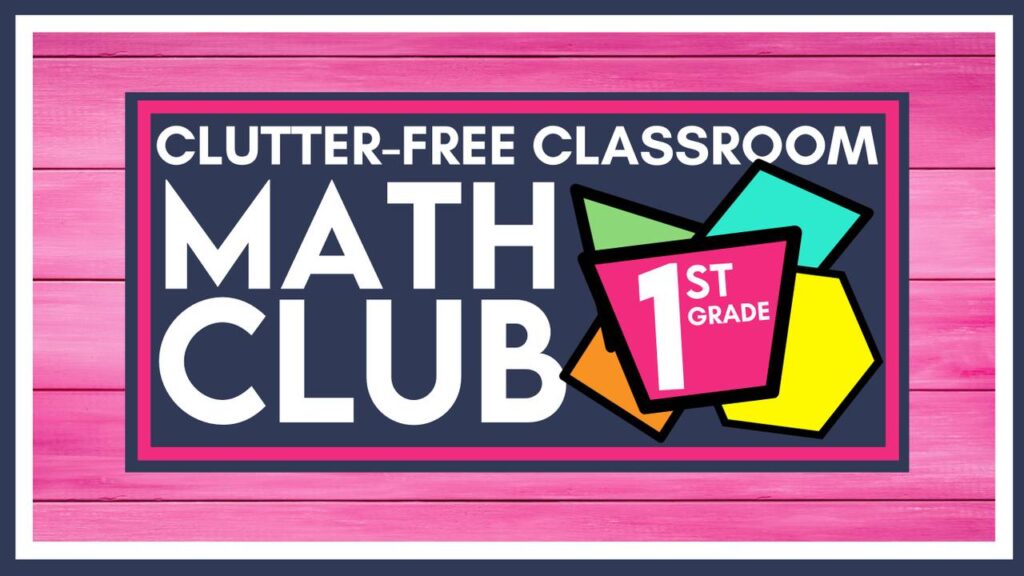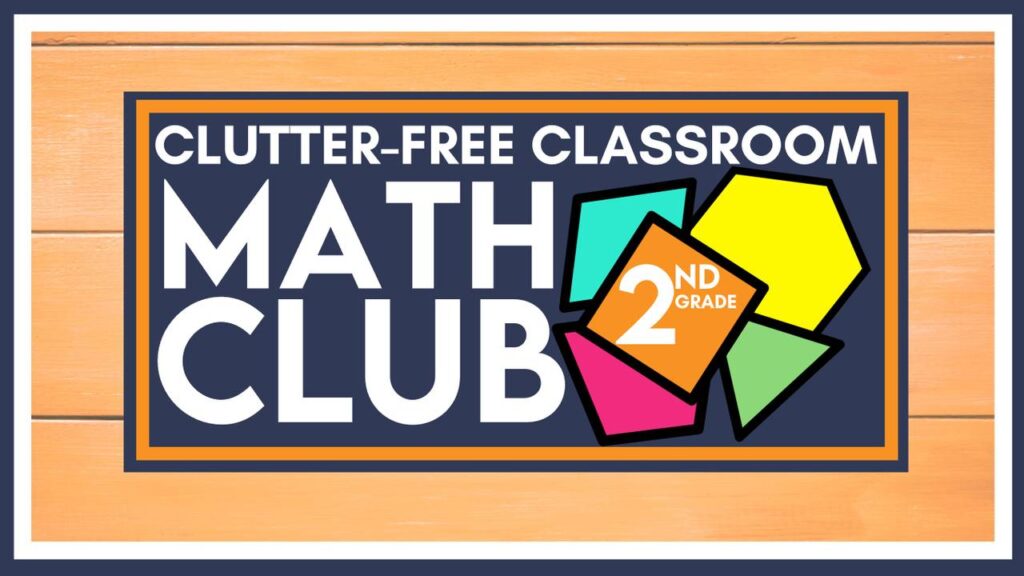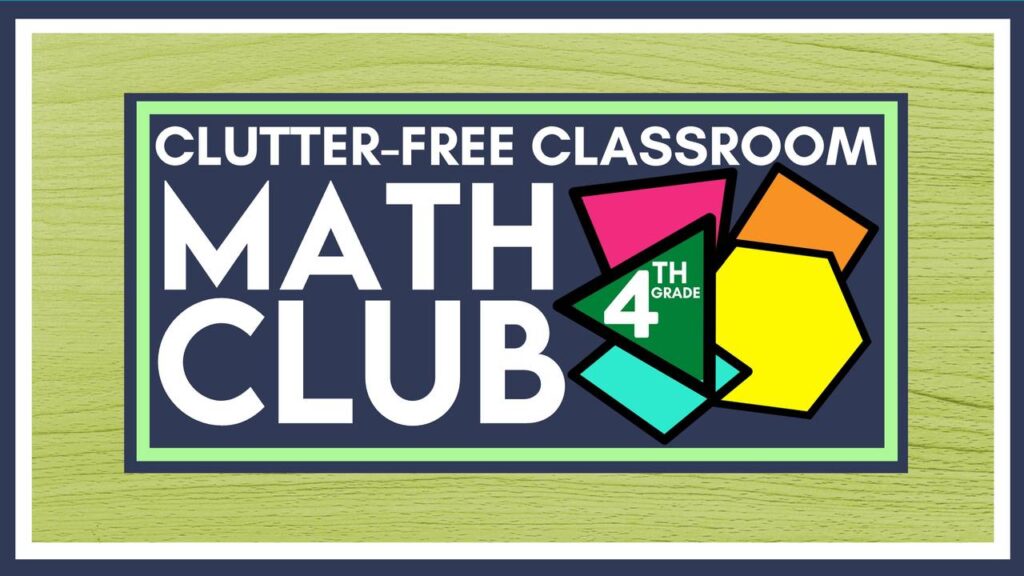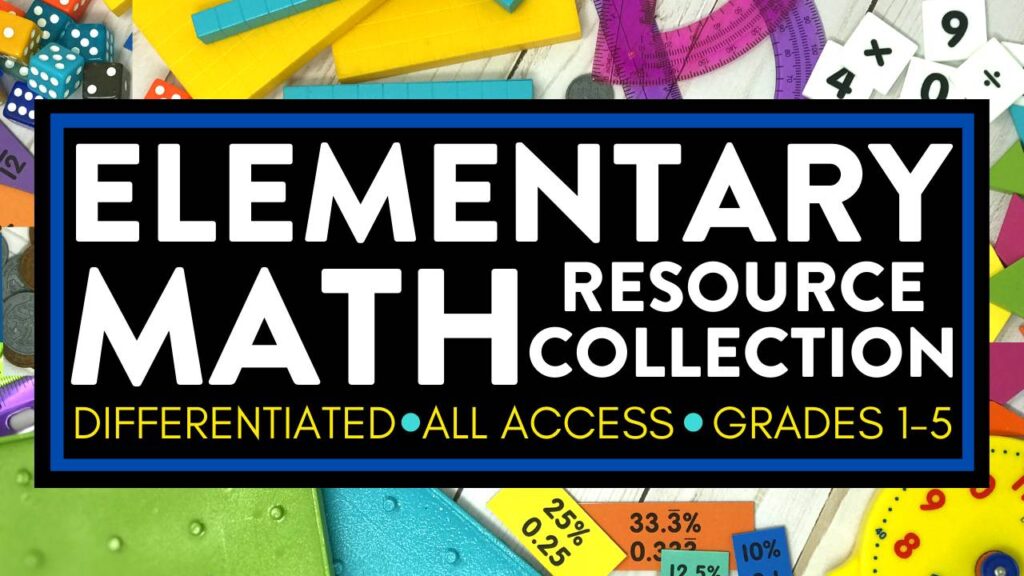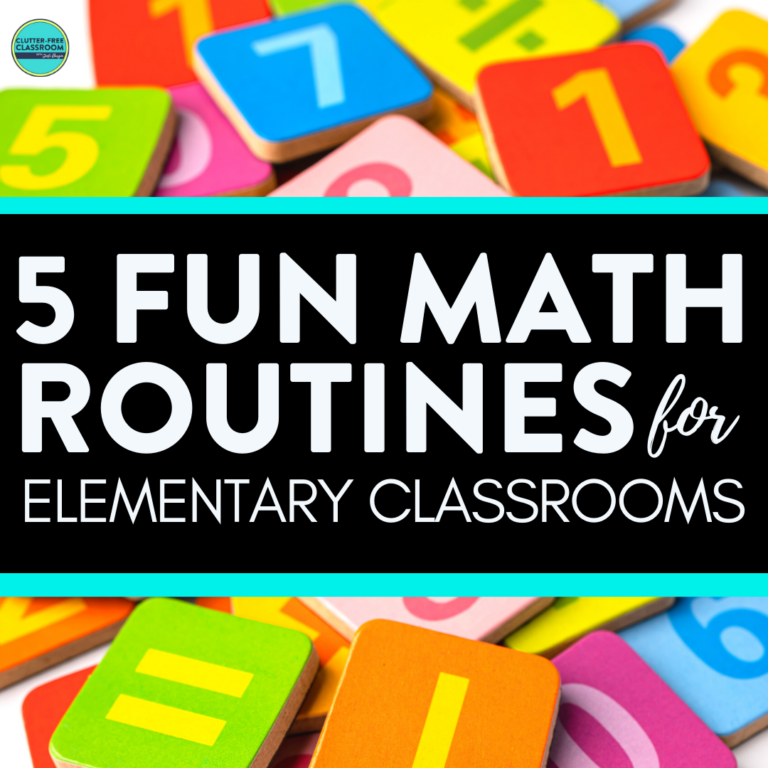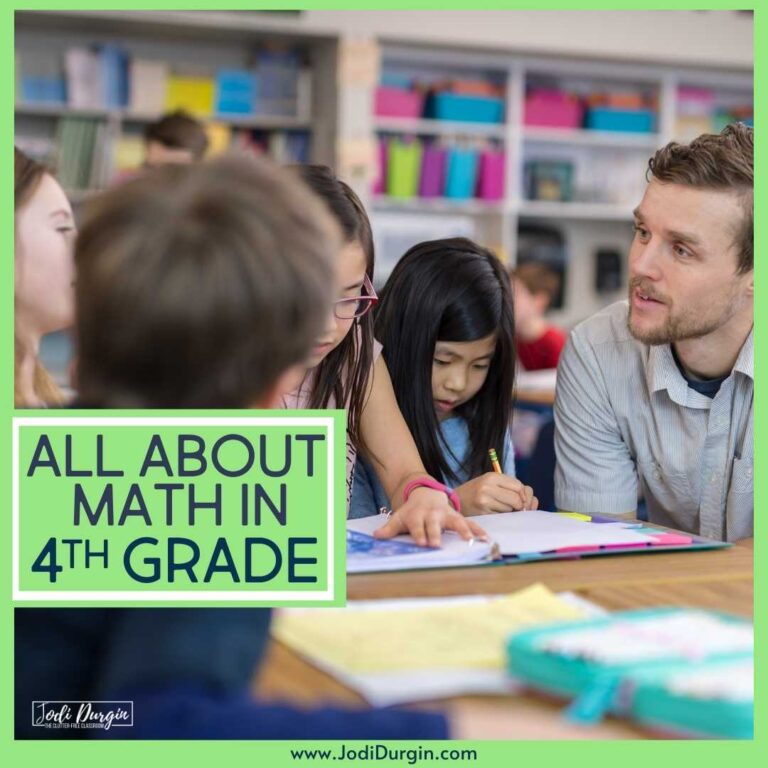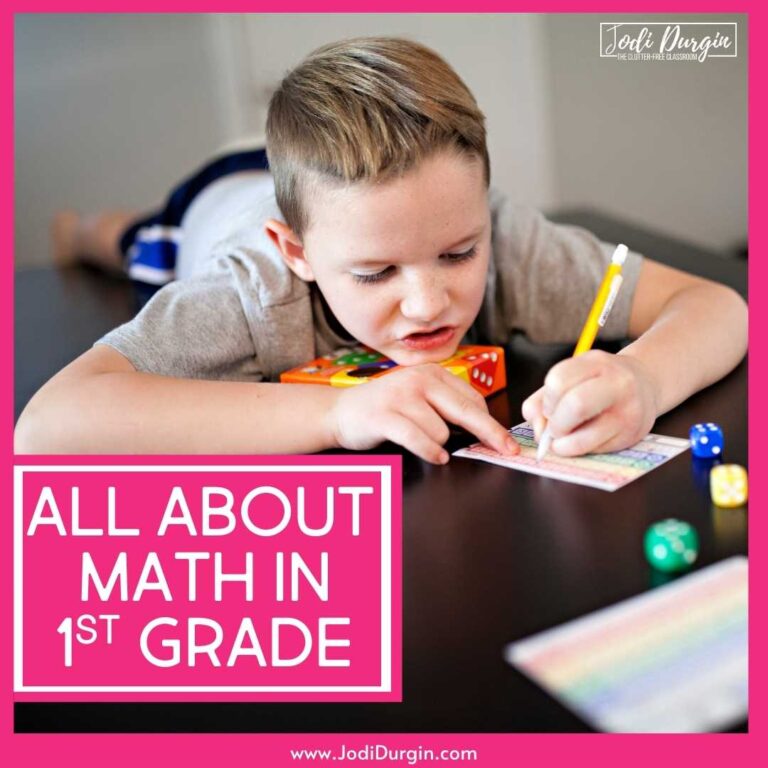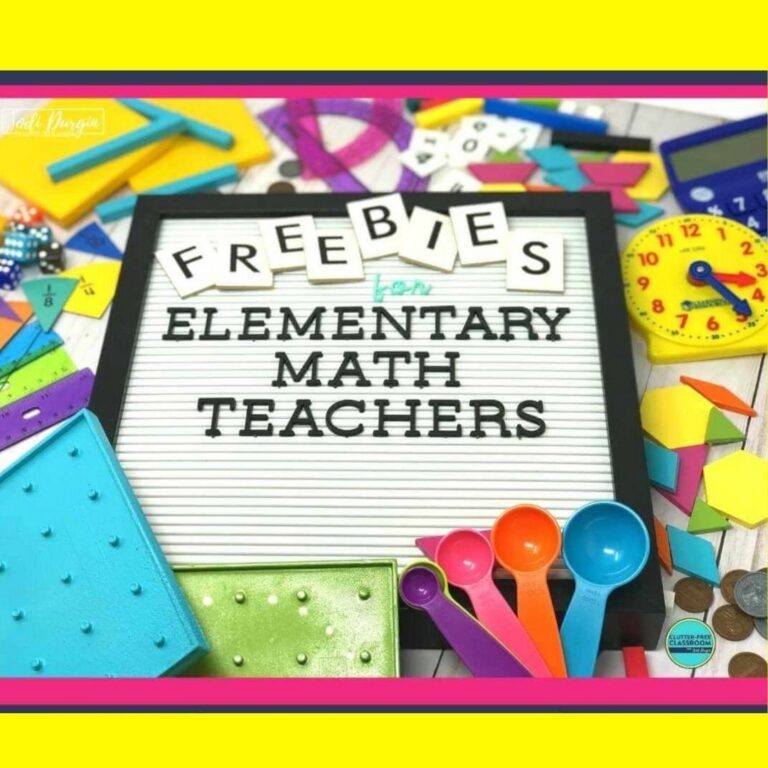I’ve blogged in the past about how math instruction used to be a huge struggle in my classroom and how I solved that problem by using a guided math workshop approach. This allowed me to greatly increase student engagement, easily meet the diverse needs of every single student, and best of all, take my students’ understanding of math to a much higher level. Today, I’ll be talking about math walls and other tools to help you teach elementary math vocabulary. First, let me tell you how I got here.
I LOVED teaching math.
My kids LOVED learning math.
They were REALLY good at it.
But, still there was a lingering problem. There were many times that I was confident my students were proficient in a skill, but they’d get problems incorrect. This was especially problematic with standardized assessments (my least favorite thing in the world of education). I was not able to clarify anything or answer whatever questions they would’ve asked me in our normal math block.
I clearly remember walking around my room (for hours) proctoring “the big test.”. It was very difficult to watch. I saw the looks of confusion, frustration, and anxiety on the faces of what was up until that point, my highest performing cohort of 3rd grade mathematicians. This was a group that required a lot of extensions and enrichment because they had demonstrated such strengths in math throughout the year. Yet…
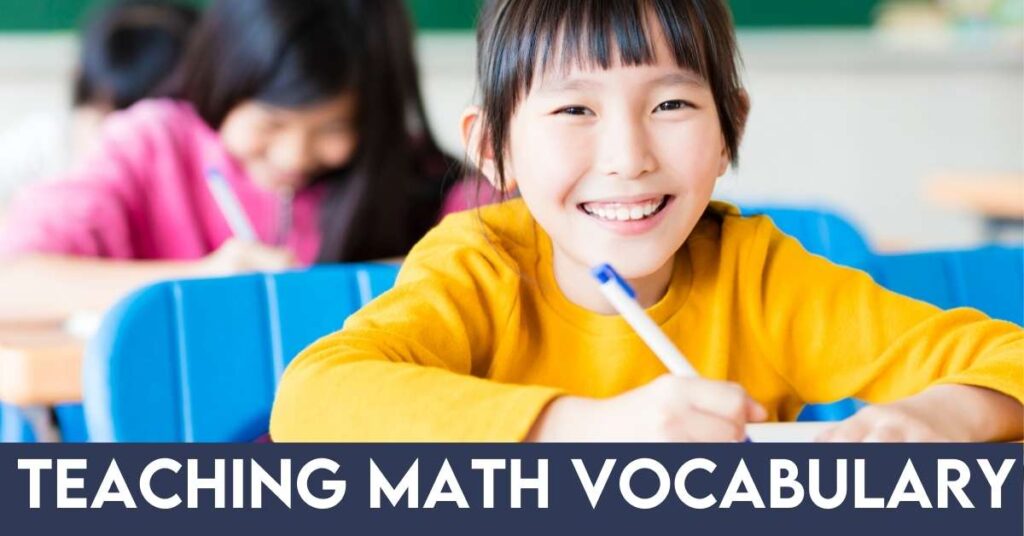
Students who were fluent in division facts froze when asked vocabulary-rich questions. An example is “compare the product of the expression on the left with the quotient of the expression on the right using the correct mathematical symbols.” Even simple equations such as “5 + 5” or “6 – 2” caused students to second guess themselves. Instead of being told to simply add or subtract, they’re asked to “compute to find the sum” or “calculate the equation to identify the difference.”
I realized it was not the actual math that was causing them issues. They were struggling because they were not fluent in the language of math.
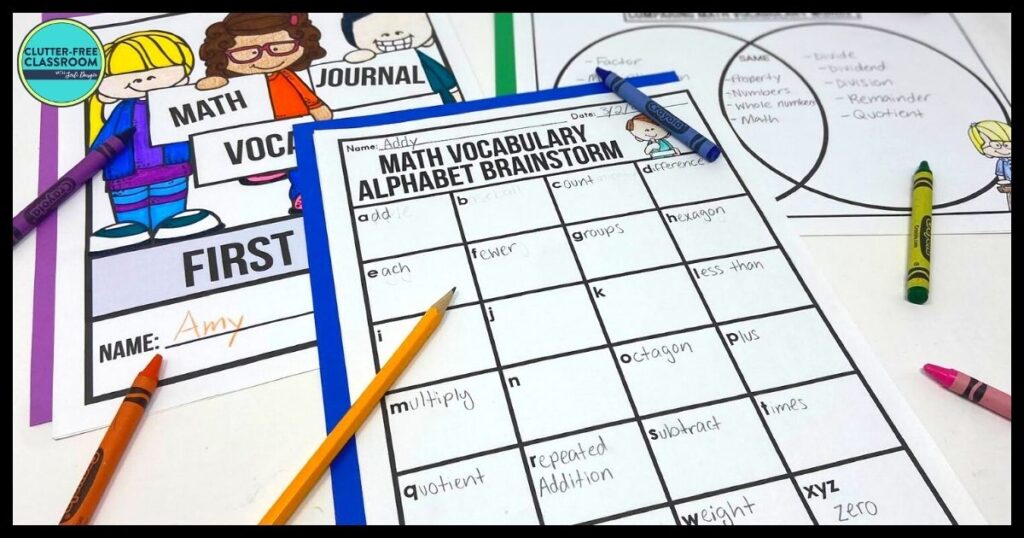
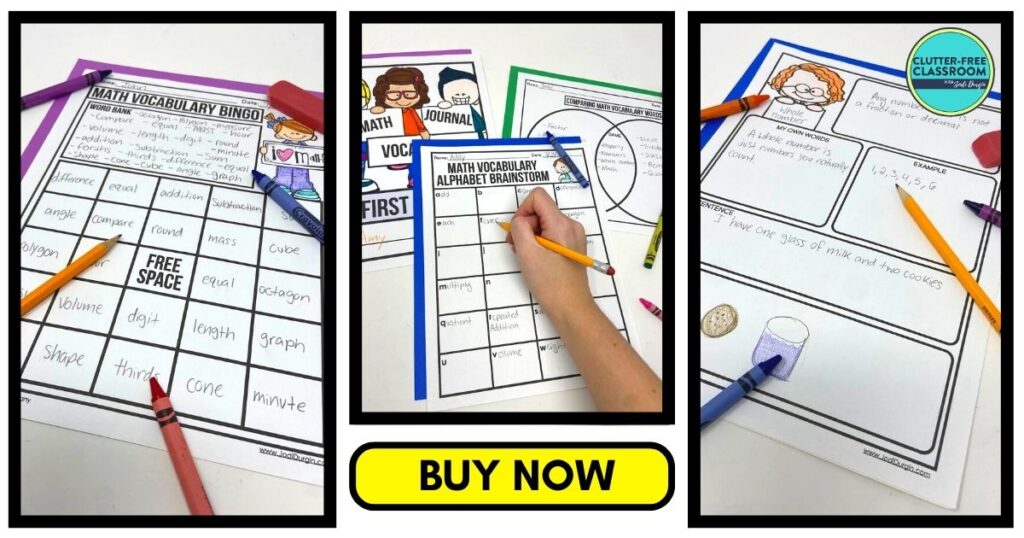
Elementary math vocabulary, which is also known as math names, is a key component of best practice math instruction. As a result, it is essential to set up math walls (including a math word wall), explicitly teach key vocabulary, and give students opportunities to practice, discuss. and use math vocabulary words in fun and engaging ways.
This blog post will answer the following questions:
- Why is teaching elementary math vocabulary words important?
- How do I teach math vocabulary?
- What are some math vocabulary activities I can use with my students?
- What do I need to know about math word walls?
- Should I alphabetize the word cards on my math word wall?
- Should I display all of the words at once on my math wall?
- How do I decide which words to put onto my math wall?

Why is Teaching Elementary Math Vocabulary Words Important?
In many ways, learning math is like learning a foreign language. In order to be successful in math, students must become fluent with the vocabulary.
Let’s think about this. Math consists of symbols, numbers, and geometric figures. Those three things alone make understanding math more than just grasping a concept. Now, let’s take into account all the words that we may hear in our everyday lives that take on an entirely different meaning when used as “math vocabulary words.”. Some examples include odd, even, product, positive, negative, power, and difference.
Since these words have very different connotations or meanings in our day to day lives, it is extremely important that we ALWAYS include teaching vocabulary as part of our math instruction. You should also provide consistent opportunities for students to practice the math vocabulary words verbally, in writing, and in the context of math problems. Learn more about integrating writing and math in this blog post!
The good news is that learning math vocabulary terms (also called math names) can be fun for your elementary students. You can incorporate it into your classroom through math wall displays (like a math word wall), mini lessons on new vocabulary, number talk experiences inviting students to use math talk to share their thinking with a partner or the class, and engaging center games and activities.

How to Teach Math Vocabulary Words in 5 Easy Steps
Here’s the best way to teach elementary math vocabulary broken down into 5 easy steps:
- Prior to starting a new math unit, identify all of the vocabulary terms that students will need to be taught. Next, break this list down further by identifying which terms need to be taught prior to specific lessons.
- On the first day of starting a new math unit, pre-teach the vocabulary to decrease cognitive barriers that may prevent children from grasping new content. This should just be a brief introduction to the new terms. This will help students build schema so when you truly teach the terms, it won’t be the first time students have heard it.
- When starting a lesson where you will be explicitly teaching new vocabulary words, give students time to explore the concepts on their own before giving them formal definitions. It is very hard to make sense of a word without actually experiencing it in context. During this process, give students the opportunity to discuss their findings with a partner. Once students have played with a concept, identified truths, and talked about it with a partner, you can provide them with the precise mathematical term for what they have discovered. When doing so, display the words in writing. It is important for students to see how the word is spelled and what it looks like in print. Some teachers choose to display the word on its own, while others decide to display each word with a definition and possibly even a visual image. Either way, this can be displayed on your math wall, math word wall, or on the board near your whole group instruction area.
- After explicitly teaching the vocabulary, consider making the vocabulary words accessible in multiple places so students can access them when they are working independently, in small groups, or during whole group instruction. In addition to a main math word wall, you may consider having a math vocabulary anchor chart to reference during guided math lessons at your teaching table. You could also provide students with portable word wall options (e.g. individual math vocabulary charts, student-made dictionaries, or vocabulary word rings) so they can access the vocabulary and their definitions with ease.
- During the lesson you explicitly taught the vocabulary and throughout the remainder of the unit, connect the meaning of the words to the students’ learning experiences. In addition, use the vocabulary consistently and repeatedly yourself. Whenever possible, point to the displayed words when speaking about them.
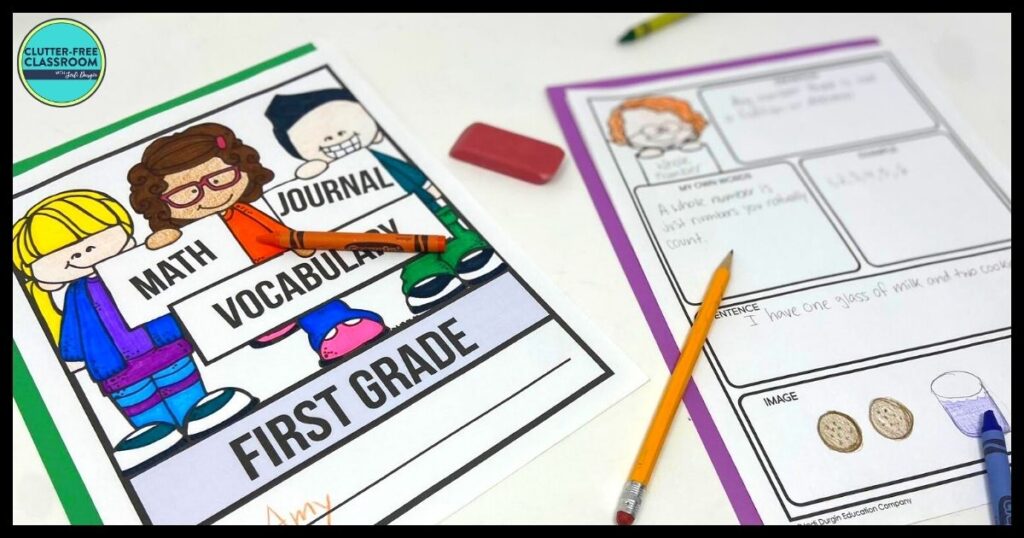
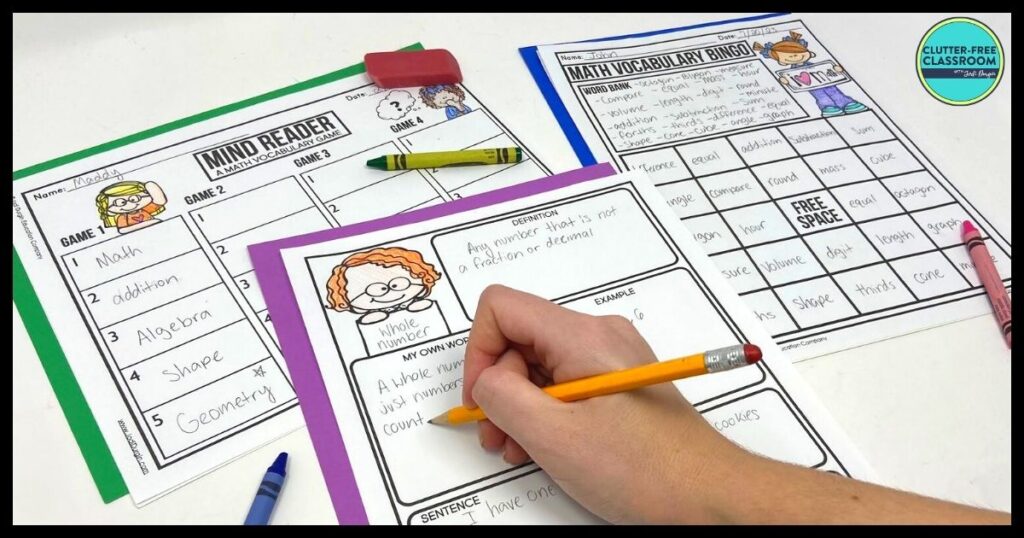
Get the Math Vocabulary Games & Activities
Click on Your Grade Level or Select The Elementary Math Collection to Get Them All!
5 Elementary Math Vocabulary Activities
Below are 5 math vocabulary activities that are perfect for elementary students.
1. Math Thesaurus
Students make lists of words with similar meanings that are useful in math.
2. Math Alphabet Book
Students make an alphabet of words that are meaningful in math. This can be done as a year-long project or by unit.
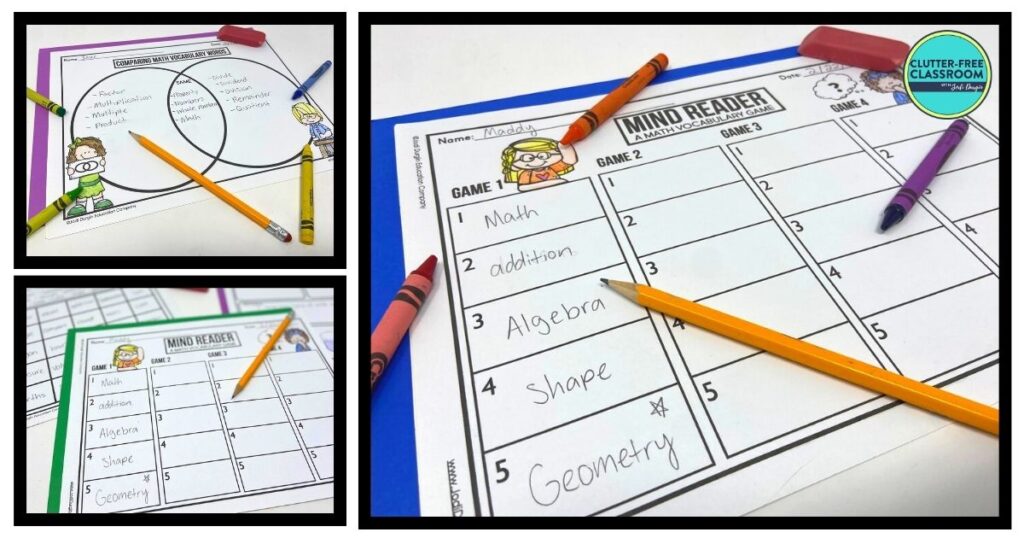
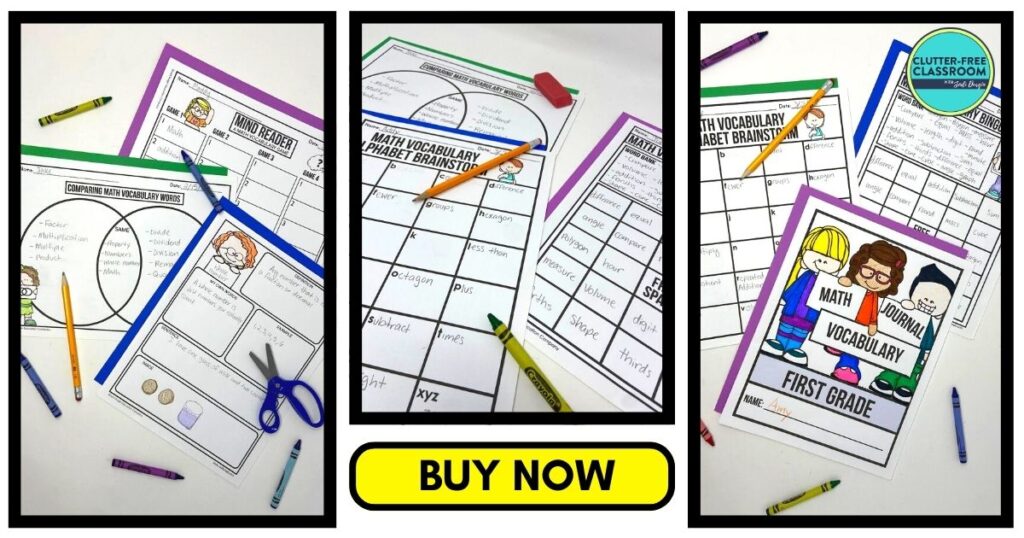
3. Word Study
Have students make a list of verbs that are useful in solving math problems. They can draw pictures to illustrate the verbs and write synonyms for them. Another idea is you could have students look at words that are part of everyday life and search for patterns. For example, students could look at the words triangle, triathlon, tricycle, tripod, trident, triplet, trilogy, and triceratops and notice that all of them have to do with the number three.
4. Math Crosswords
Have students write sentences or create picture clues to create math crossword puzzles. Consider having them relate to the math topic you are teaching.
5. Math Doodles
Provide a student with a math vocabulary word and either a paper and pencil or a dry erase board. Without sharing the word with other players, speaking, or writing any words the student must illustrate the word while players guess what it is.
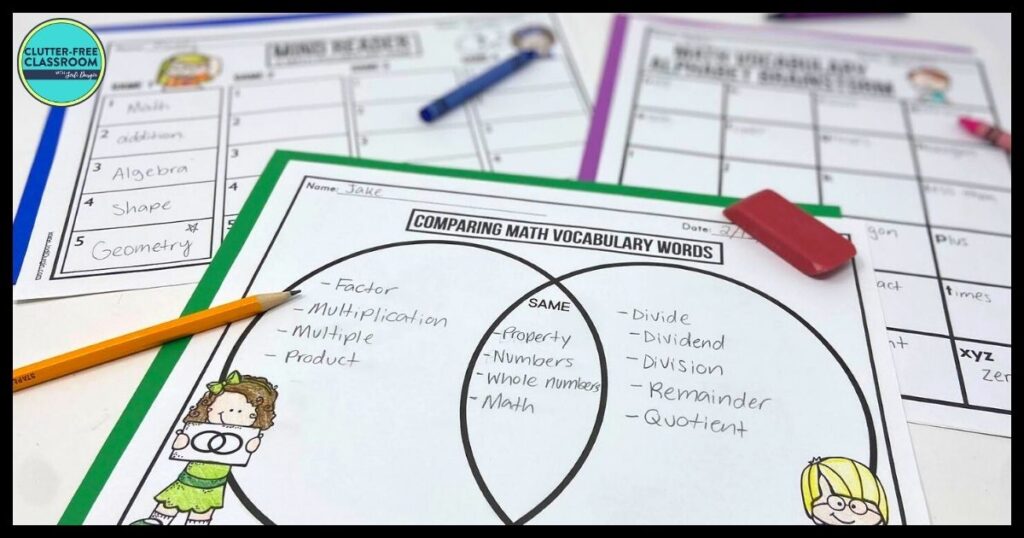
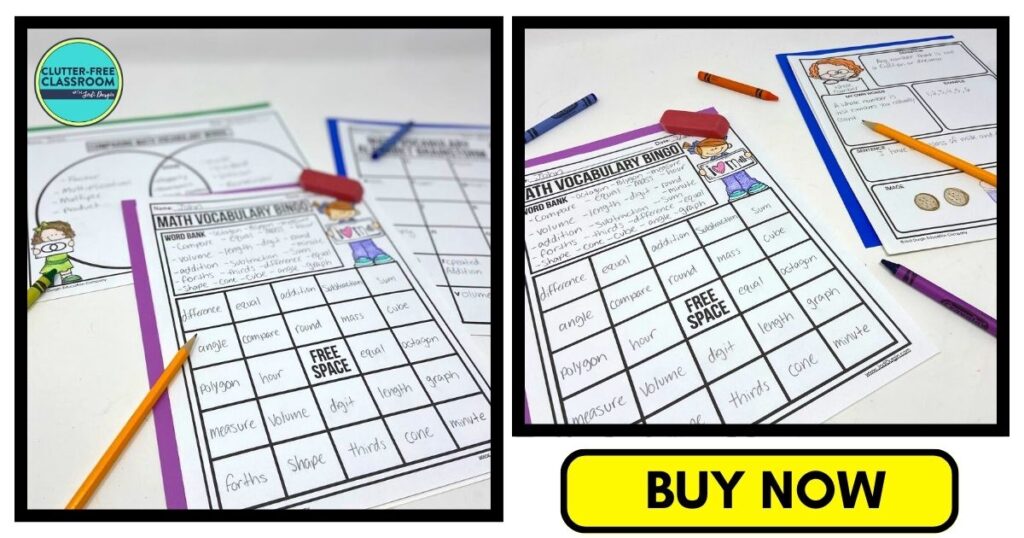
5 Math Word Wall Ideas for Elementary Teachers
I can’t emphasize enough the importance of math word walls in elementary classrooms. It doesn’t matter if you teach first grade or fifth grade, you need a math wall display in your classroom. Read below to grab five ideas for setting up and implementing a word wall for math.
- Designate your word wall bulletin board area when you are setting up your classroom at the beginning of the school year. Be sure it’s an area where students can access it with ease. You’ll want students to be able to reach the words so they can take them from the wall and bring them back to their desk. In addition, you may want to position it in the room so all students can reference it from the whole group instruction area and their individual work spaces.
- Make it interactive by housing your word wall on a whiteboard in your classroom and putting a magnet on the back of the cards. This makes it so students can go up to the board, remove a vocabulary card, bring it back to their desk, and return it when they are done with it. Explicitly teach students how to use it at the beginning of the year and reinforce this procedure throughout the school year through modeling.
- Use different color card stock to create visual organization. Color coding is a great way to keep things organized and help students make connections between words. This strategy helps a lot with organizing math walls!
- Regularly use the word wall in fun and engaging ways. For example, play a game where you give students clues to a word you are thinking of that’s on the word wall. They have to try and guess which word it is. Later on in the school year, you can invite a student to choose a word and give clues to their classmates. A second example of how you can use the word wall regularly is to pick two words from your math vocabulary word wall. Ask the students to think about the relationship and connections between them. Determining how the words go together will deepen their thinking and understanding of not only those words, but the math concepts as a whole. This can also be done in written form. I like to have my students discuss math word relationships and record their thinking in written form as well.
- Create individual “math word walls” for students to use for homework or when they are out of the classroom. This could look like a ring of vocabulary cards for each student to keep in their math toolkit or binder. Another option is a printed out math dictionary for each student to keep in their math binder or folder.
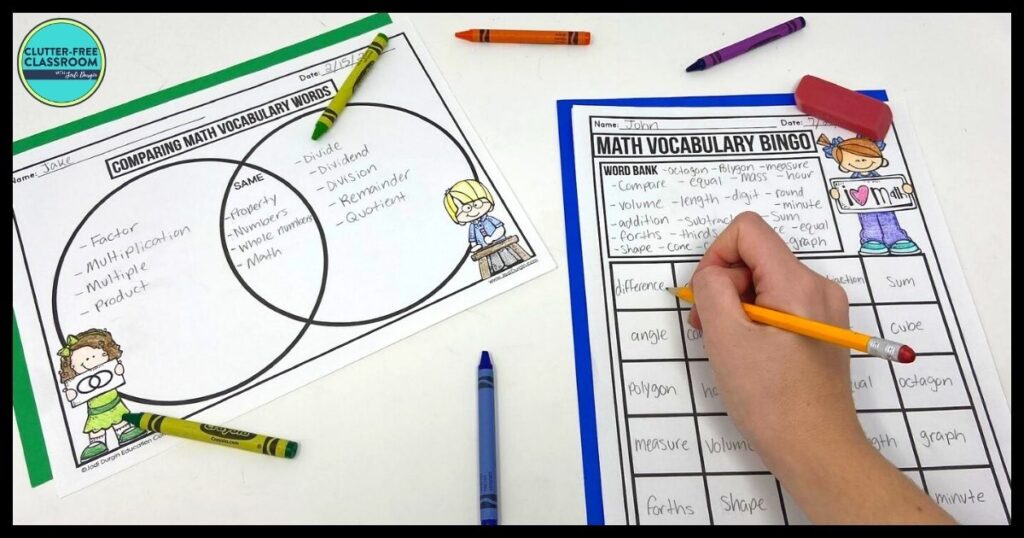
3 Frequently Asked Questions about Math Word Walls
When I am doing professional development, presenting at conferences, or doing online webinars about how to teach Guided MATH Workshop, I am often asked the following questions about math walls:
1. Should I alphabetize the word cards on my math word wall?
No. It is far better to cluster the words by concept than to put them in alphabetical order. The reason for having the words displayed is to strengthen student understanding of concepts. That is not done as easily if the words are in ABC order.
2. Should I display all of the words at once on my math wall?
No. Like all aspects of setting up your classroom for a new school year, it should be “built” with the students. If you hang up all of your math vocabulary cards before the school year starts, or even at the start of a unit, they will be nothing more than a decoration. The words should be put up as you introduce them and referenced often.
3. How do I decide which words to put onto my math wall?
As I mentioned before, it is important to identify the words you will need to focus on prior to planning your math unit as well as when writing individual math lesson plans within the unit. You want to make sure you are very thorough in the words you include. For that reason, I do feel the majority of the word selection should be teacher-generated. That is not to say that you shouldn’t add additional words based on student suggestions.
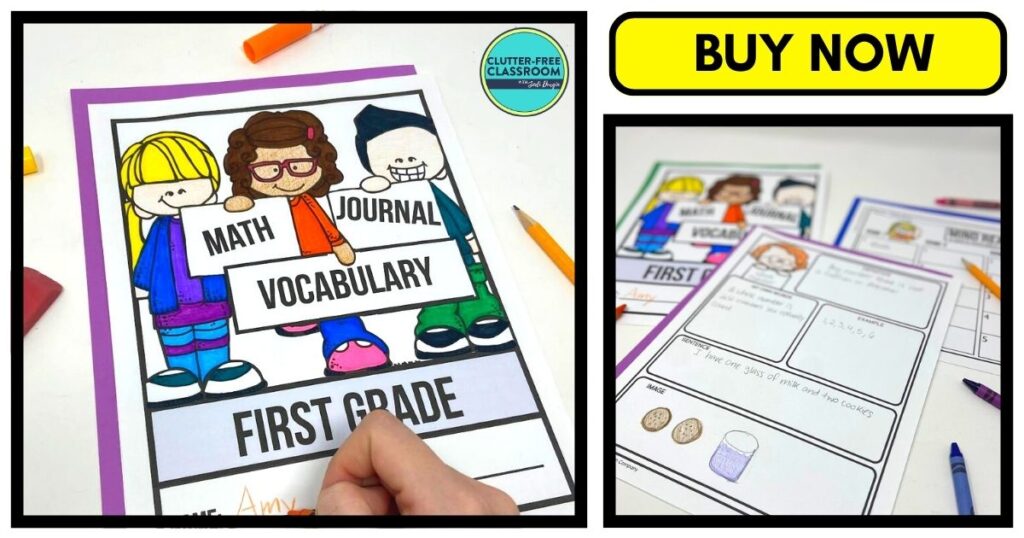
Math Resources for 1st-5th Grade Teachers
If you need printable and digital math resources for your classroom, then check out the math collections below!
Free Elementary Math Resources
We would love for you to try these elementary math vocabulary resources with your students. It offers them opportunities to practice using math vocabulary in fun and engaging ways. Download math vocabulary graphic organizers (along with other math freebies) in our free printable math activities for elementary teachers.
Check out my math vocabulary resources, which include math vocabulary journals, word cards for a math wall, games, and activities.
- 1st Grade Math Vocabulary Journals, Word Wall Cards, Games & Activities
- 2nd Grade Math Vocabulary Journals, Word Wall Cards, Games & Activities
- 3rd Grade Math Vocabulary Journals, Word Wall Cards, Games & Activities
- 4th Grade Math Vocabulary Journals, Word Wall Cards, Games & Activities
- 5th Grade Math Vocabulary Journals, Word Wall Cards, Games & Activities



